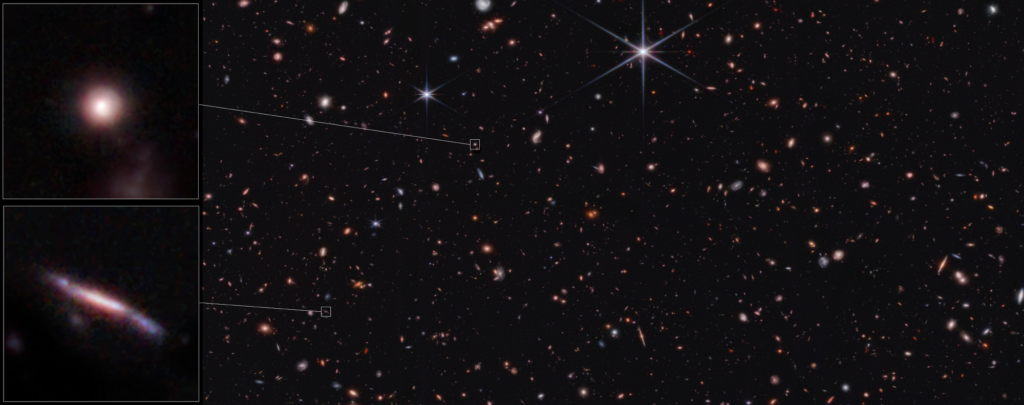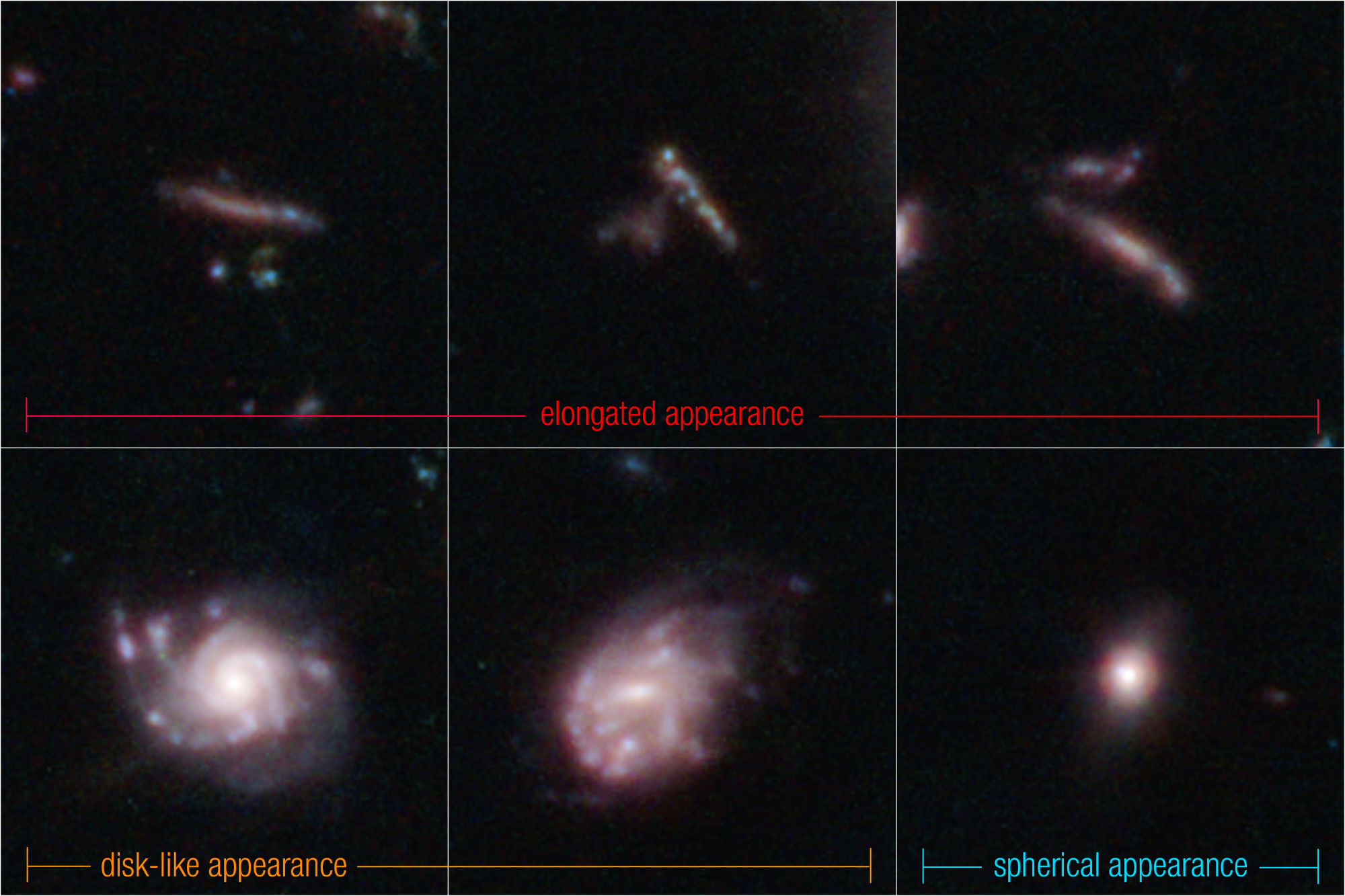After analyzing the images taken by the James Webb Space Telescope (JWST), the researchers found that galaxies in the early universe often had a flat and elongated shape. This allowed them to calculate what our Milky Way might have looked like in the distant past.

This conclusion was made based on the study of data from the CEERS survey, an extensive array of images depicting galaxies that existed when the age of the Universe was from 600 million to 6 billion years. Astronomers found that at that time, about 50-80% of the galaxies were flattened in two dimensions. They figuratively compare their appearance with noodles and surfboards.
These distant galaxies are also much less massive than the modern spiral and elliptical galaxies that we observe in our environment. The reason for this was that they had less time to grow in the early universe.
As for the “round” galaxies, in the shape of a sphere or frisbee, they were much rarer. According to the researchers, spherical galaxies are the most “compact,” and they are less frequently identified. Frisbee galaxies are the same size as surfboard-shaped and noodle-shaped galaxies. But they are much more common closer to our times than to the era of the Big Bang.

The researchers also tried to imagine what our Milky Way galaxy looked like billions of years ago. In their opinion, it looked like a surfboard. This hypothesis is partially based on new data obtained using JWST. Astronomers have rewound time to estimate the mass of the Milky Way billions of years ago, which correlates with its assumed shape at that time.
According to https://www.nasa.gov
Follow us on Twitter to get the most interesting space news in time
https://twitter.com/ust_magazine


